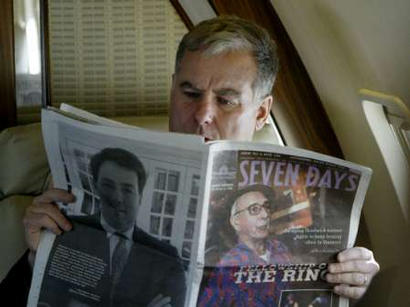November really boils down to one choice: Anybody But Bush. But since we’re in the primary stage, why not have a little bit of fun?
Kucinich doesn’t stand a chance in hell, but he’s got my vote in the primary. Despite what scaredy-cats decry as a wacko platform, Kucinich hasn’t managed his campaign with incompetence. Kucinich has never wavered from his stance. Kucinich has never had to clarify a comment or sleep with the Gore 2000 boys to save his bacon. Because Kucinich has a bigger pair of balls than Dean. He’s against the Patriot Act (unlike Dean). He’s audacious enough to end Star Wars and NAFTA. Kucinich has stayed in the race and remained true to his convictions.
I had problems with Dean’s position on the death penalty and his loose stance on civil liberties, as well as his intricate health care plan (compared to, say, a clear-cut Canadian style one). But I had contemplated voting for Dean because he had what I perceived to be courage. Now it turns out that Dean has been flying by the seat of his pants in nearly every capacity. And that’s no way to run a campaign or a country.
So while I’ll vote Anybody But Bush in November, I’m voting with my conscience in the primary. Do any of you lefties have the balls to do the same?
